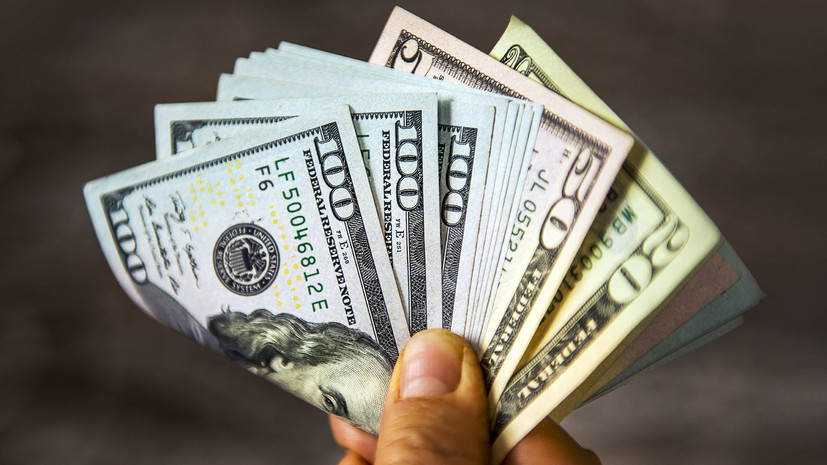On Friday, February 28, trading on the Moscow Exchange is accompanied by a weakening of the Russian currency. The dollar rose by 2.3% - to the level of 67.6 rubles. The last time a similar value could be observed back in January 2019. At the same time, the euro exchange rate added 2.7% and reached its maximum level over the past 11 months - 74.5 rubles.
The official exchange rate of the Central Bank on February 29 was 66.99 rubles per dollar and 73.72 rubles per euro.
The negative dynamics is also demonstrated by the Russian stock market. The Moscow Stock Exchange index fell 5% to 2744 points, and the RTS index fell 6.6% to 1279 points.
The depreciation of the national currency and Russian securities has been going on since the beginning of the working week. RT analysts interviewed associate negative dynamics with the aggravation of panic in the global financial market. So, since Monday, the main stock indices of the USA, Europe and Asia have shown a continuous decline and are reduced on average by 3-4% per day.
As a result of the Asian session on February 28, the indicator of the Shanghai SSE Composite Exchange fell by 3.7%, and the Japanese Nikkei - by 3.67%. At the same time, during trading on European markets, the French CAC 40 index decreased by 4.56%, the English FTSE 100 - by 4.3%, and the German DAX index - by 5%.
On the eve of a sharp collapse of quotations occurred in the US stock market. On February 27, at the auction in the US, the Dow Jones industrial index and corporate S&P 500 crashed by 4.42%, and the high-tech NASDAQ - by 4.61%.
“The biggest drop in the stock markets is taking place against the backdrop of panic among investors due to the spread of the coronavirus epidemic in the world. In the current conditions, investors are massively selling risky assets, which puts pressure on the currencies of emerging markets and the ruble, ”Vyacheslav Abramov, director of the BCS Broker sales office, explained in an interview with RT.
Recall that at the end of December 2019, authorities in Chinese Wuhan reported an outbreak of a respiratory infection of unknown origin. According to local experts, the cause of the disease was a new type of coronavirus - 2019-nCoV. To date, according to the State Committee for Healthcare of China, the number of people infected in the PRC has exceeded 78.8 thousand, 2788 of them have died.
According to available estimates, the number of infected people in the world exceeded 83.5 thousand. Outside of mainland China, the most cases were recorded in South Korea (2337 people), Japan (more than 900 people, including those infected from the Diamond Princess cruise ship) and Italy (650 )
The spread of the disease risks causing a massive drop in trade, passenger traffic and fuel consumption. The threat of a decline in hydrocarbon demand has already provoked a record reduction in oil prices and also had a negative impact on the ruble. About this in an interview with RT said the deputy head of the information and analytical center "Alpari" Natalia Milchakova.
Over the past week, the cost of raw materials of the reference brand Brent fell by more than 15% and fell below the psychological mark of $ 50 per barrel. This happened for the first time since July 2017.
Meanwhile, the influence of the cost of oil on the ruble can be restrained by the budget rule, which stipulates that during the rise in price of hydrocarbons, the Ministry of Finance through the Central Bank buys foreign currency and thereby puts pressure on the ruble. Moreover, in the event of a collapse of the energy market, the ministry ceases operations and pressure on the ruble weakens.
“The support for the ruble could be precisely the suspension of purchases of foreign currency by the Ministry of Finance within the framework of the budget rule. Such a refusal to artificially support the dollar and the euro should help the ruble strengthen, ”said Milchakova.
In addition, the approach of the tax period can play in favor of the ruble, Vyacheslav Abramov believes. At this time, traditionally, exporting companies begin to sell foreign currency and buy rubles for taxes.
In general, amid the spread of coronavirus, RT analysts surveyed admit the possibility of further growth in the dollar and euro against ruble rates in the near future. However, experts do not expect a significant reduction in the price of the national currency.
“If the central banks of the leading states begin to pursue a more coordinated policy to reduce tensions on stock exchanges, and the World Health Organization ceases to put the situation around the virus in absolute terms, the Russian national currency may stop at 66 rubles per dollar and 72 rubles per euro,” he explained In an interview with RT, Alor-broker analyst Alexei Antonov.

